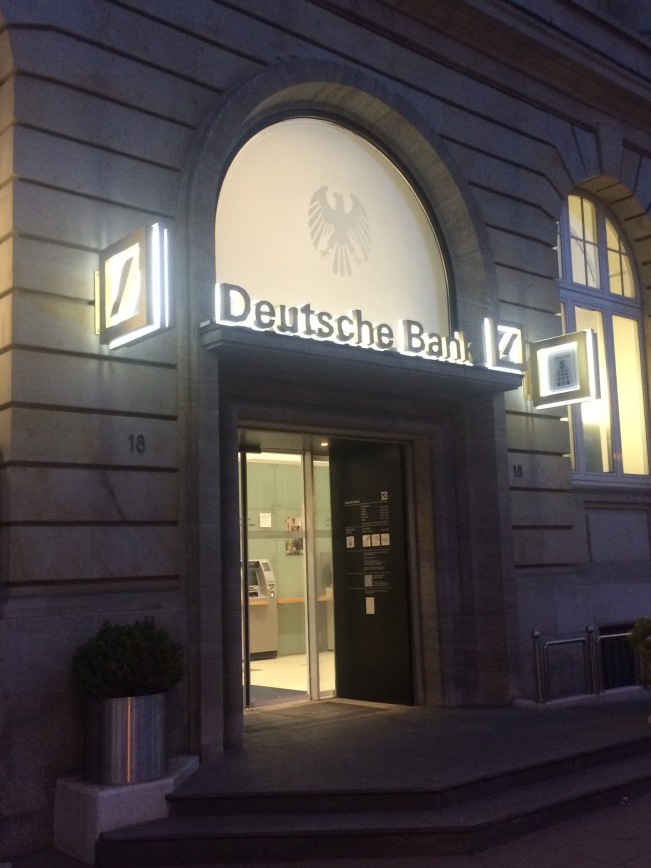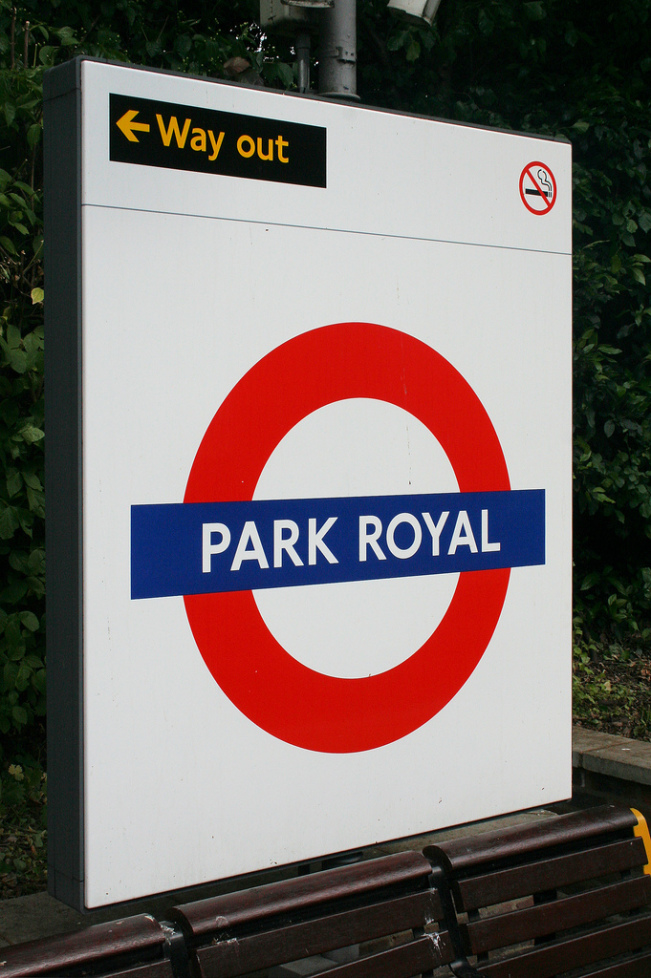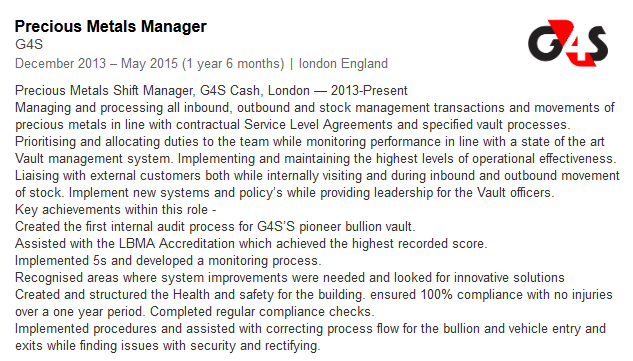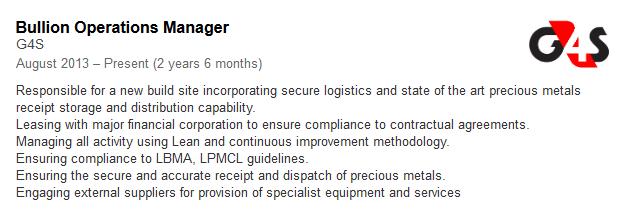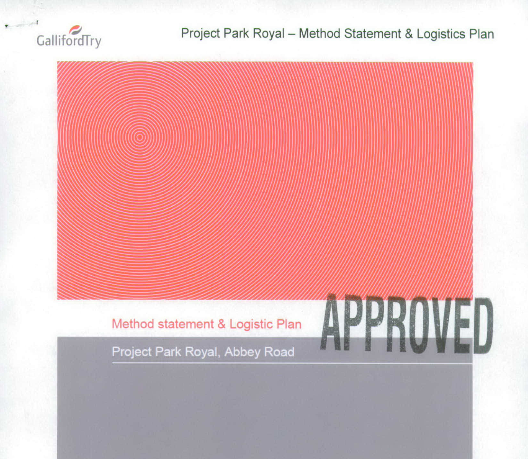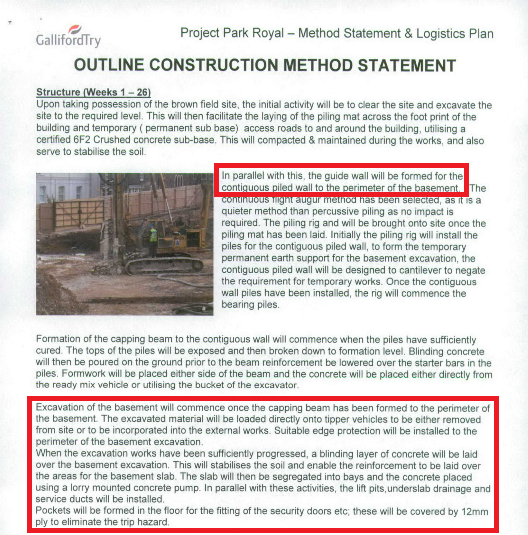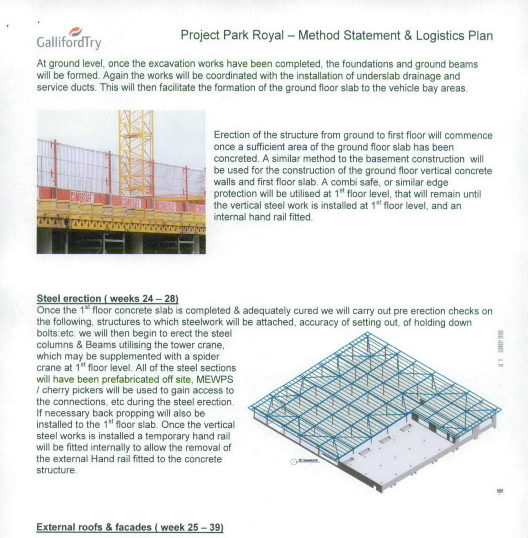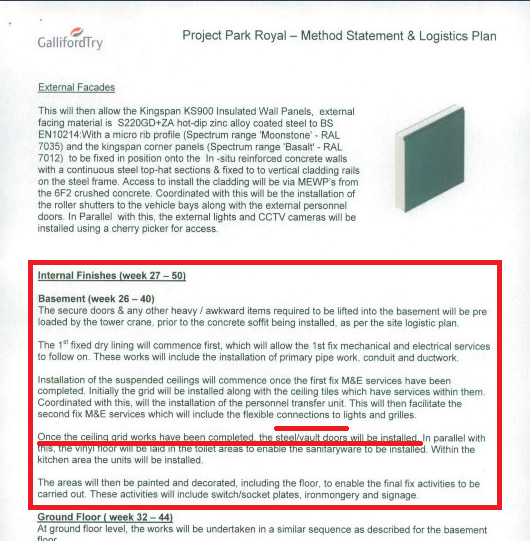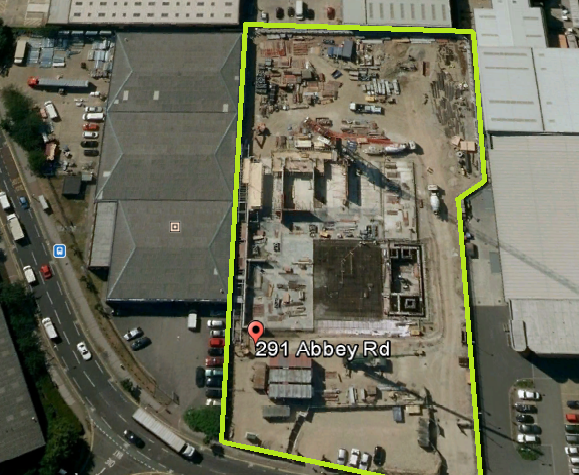G4S London Gold Vault 2.0: ICBC In, Deutsche Bank Out
On 8 January 2016, Reuters broke the news that ICBC Standard Bank has purchased the lease on Deutsche Bank’s gold vault in London, and that ICBC Standard intends to become a member of the clearing syndicate, London Precious Metals Clearing Limited (LPMCL):
“ICBC Standard Bank is buying the lease on Deutsche Bank’s London gold and silver vault, enlarging its footprint in the city’s bullion market.."
“ICBC.. has also applied to become a clearing member of the London gold and silver over-the-counter business.“
“The vault became operational in June 2014 and has a capacity of 1,500 tonnes. It was built and is managed by British security services company G4S.“
These moves by ICBC Standard Bank have now put both the G4S vault and LPMCL, (a private company), back in the spotlight.
The Background to the G4S Vault
On 20 March 2012, Deutsche Bank issued a press release announcing that it had contracted security company G4S to construct and manage a precious metals vault on Deutsche’s behalf in London. Critically, this was a substantial long-term partnership between Deutsche Bank and G4S, with G4S doing the actual work of building and then operating the precious metals vault. Deutsche stated at the time in March 2012 that the new vault would be for the exclusive use of Deutsche Bank clients, and that it would available for use by these clients during 2013:
“Deutsche Bank and G4S are pleased to announce that they are to join forces in establishing a new vault for the storage of precious metals in the UK.”
“The new vault will be built and managed by G4S, the world’s leading international security solutions group, for the exclusive use of Deutsche Bank and its clients and will be an enhancement to Deutsche Bank’s already extensive metal trading and clearing capabilities. ”
“‘It will position us well to quickly become a leading metals clearing and custody house,’ commented Raymond Key, Global Head of Metals Trading at Deutsche Bank. The vault, which will be constructed and run to industry-leading standards of security, will be available for clients in 2013.“
Likewise, on 20 March 2012, G4S released its own press release in which it revealed that the contract with Deutsche Bank was a 10 year commercial deal and that discussions about building the vault had commenced in 2009:
“Working in partnership with Deutsche Bank, the business has secured a ten year commercial arrangement to establish a state of the art precious metals vault that will be built and managed by G4S, and will enable Deutsche Bank to extend and enhance their metal trading and clearing capabilities.
Discussions started with Deutsche Bank back in 2009 when increased economic volatility started to cause a rise in interest levels among investors for precious metals."
“James Dinsdale, Managing Director, G4S Cash Solutions, said: ‘We’re delighted to have secured this partnership with Deutsche Bank….. This agreement represents a strategic move in the UK market place for G4S."
Law firm Clyde & Co acted as advisor to G4S for the Deutsche vault project, and it too issued its own press release on 19 March 2012:
“Clyde & Co has advised global security and logistics company G4S in relation to a project for Deutsche Bank.
G4S will build and manage a gold bullion secure storage vault in the UK for Deutsche Bank."
What none of the press releases mentioned was that the precious metal vault was being integrated into the basement of a new G4S operating centre in Park Royal, London.
As it turns out, Deutsche did not deliver on its self-publicised deadline for the new vault becoming available to its clients in 2013. However, on 9 June 2014, over 2 years after announcing the London vault project, a much reduced Deutsche Bank London precious metals business that had substantially stepped back from the London Gold Market, confirmed to Reuters that it had finally opened its new London precious metals vault. Note that Reuters is usually the first distribution channel that the London Gold Market PR machine contacts to get its stories out on to the newswires.
According to Reuters’ coverage of the June 2014 Deutsche opening announcement:
“Deutsche’s new vault has been built in partnership with logistics company G4S and is open to institutional investors, and commercial and central banks.”
“The vault has a capacity of 1,500 tonnes, making it significantly bigger than a 200-tonne storage facility that the bank owns at the Singapore Freeport.“
The period from late 2013 to early 2014 turned out to be a turbulent period for Deutsche Bank’s precious metals operations in London, during which time:
– German financial regulator BaFin began an investigation into the London Gold and Silver Fixings, of which Deutsche Bank was a fixing member (November 2013)
– Deutsche Bank announced that it would withdraw its participation in the London Gold and Silver Fixings and sell the Fixing seats (January 2014)
– Deutsche Bank ceased contributing to the GOFO benchmark and ceased being a LBMA market maker for precious metals forwards (February 2014)
– Deutsche Bank ‘failed to sell’ its gold and silver fixing seats (despite ICBC Standard Bank being interested), and Deutsche then merely resorted to withdrawing from the fixings (April/May 2014)
– Deutsche Bank’s Matthew Keen, who was a director of London Gold Market Fixing Limited (LGMFL), London Silver Market Fixing Limited (LSMFL), and London Precious Metals Clearing Limited (LPMCL) resigned from Deutsche Bank, prompting the appointment of other Deutsche representatives to those company directorships (January 2014)
– Deutsche Bank’s representative on the London Bullion Market Association’s (LBMA) management committee, Ronan Donohoe, resigned from the LBMA management committee on 5 March 2014, only 7 months into a 2 year appointment (March 2014)
Given all the above retrenchments affecting its precious metals activities in London, it is slightly odd that Deutsche Bank still went ahead in June 2014 and announced the opening, at least in name, of its London precious metals vault collaboration with G4S. Perhaps it had a contractual obligation with G4S to do so.
But odder still is that less that 5 months after announcing the opening of the new vault, Deutsche Bank then stepped back even further by closing its physical precious metals trading operation in London in November 2014, and then announced in December 2014 that it would actually be interested in selling its London gold vault. This decision is beyond bizarre given the huge level of commitment that Deutsche Bank had made to the development of the vault for at least 4-5 years beginning in 2009.
As Reuters reported on 24 December 2014:
“Deutsche Bank is open to offers for its London-based gold vault following the closure of its physical precious metals business, three sources familiar with the matter said on Wednesday. ‘If the right offer came along, then the bank would sell the London vault,’ one source close to the situation said.
The German bank shut its physical precious metals trading arm last month as it further reduced its exposure to commodity markets."
“Deutsche declined to comment on the status of its vaulting operation.“
“…it could be difficult for Deutsche Bank to find buyers among its nearest peers. But sources familiar with the matter said a Chinese entity could come forward. ICBC is trying to build a presence in London and the sources said it was a likely candidate. ICBC declined to comment."
The key question is did this Deutsche Bank vault in London, operated by G4S, ever do any precious metals business in the time between June 2014 and November 2014? If it did, then this activity could not have been substantial.
Deutsche Bank clients holding allocated gold and other precious metals with Deutsche in London would not have been impressed if they were told their holdings were being moved to the new vault in the summer of 2014, only to find out a few months later that Deutsche was looking to exit its involvement with the vault.
While the G4S / Deutsche vault sales process seemed to remain on hold for the entire year of 2015 with no announced activity from either Deutsche bank or ICBC, and no media scrutiny, Deutsche continued to exit the physical gold business in London amid a number of other significant developments. In August 2015, Deutsche departed from the London Precious Metals Clearing Limited (LPMCL) company, leaving HSBC, JP Morgan, Bank of Nova Scotia, Barclays, and UBS as the remaining 5 members of the London gold and silver clearing consortium.
On 20 August 2015, Reuters reported that:
“Deutsche Bank is to sever its last link with commodity trading by resigning as a clearing member of the London gold and silver over-the-counter business.." [LPMCL]
It’s a little known fact that London Precious Metals Clearing Limited (LPMCL) (company number 04195299) is a UK private limited company with the same registered address as the London Gold Market Fixing Limited and the London Silver Market Fixing Company Limited. This registered address is C/O Hackwood Secretaries Limited, One Silk Street, London EC2Y 8HQ. Indeed, Hackwood Secretaries Limited is the Company Secretary for LPMCL. Hackwood Secretaries Limited is one of the companies Linklaters uses to offer its company sectretariat services. And Linklaters is one of the better known ‘magic circle’ global law firms that is headquartered in London.
While LPMCL has so far managed to steer clear of US class actions suits concerning precious metals manipulation accusations, its fellow Linklater registered gold and silver fixing companies, London Gold Market Fixing Limited and the London Silver Market Fixing Company Limited, both of which have had a lot of the same directors as LPMCL, have not been so lucky on the class action front, and both companies are now facing live consolidated class action suits in New York courts.
Each member bank of LPMCL usually appoints two directors who are senior staff members of that investment bank. So with 6 investment banks within LPMCL, there are usually 11-12 LPMCL directors, give or take a few people who would invariably be moving bank at any given time.
Deutsche Bank’s two last-serving directors of LPMCL, Raj Kumar and David Mitchell-Innes, actually resigned from LPMCL on 9th February and 1st September 2015, respectively. The February 2015 LPMCL resignation by Kumar seems to have been precipitated by his internal move within Deutsche Bank for a short while to the role of Global COO for Commodities, but then significantly, Kumar left Deutsche Bank in July 2015 to take up a role in ICBC Standard Bank in September 2015 as a managing director in ICBC Standard’s precious metals business, as Reuters reported on 17 September:
“London-based ICBC Standard Bank Plc named Raj Kumar head of its precious metals business development, effective immediately.
Kumar, who will be based in London, joins from Deutsche Bank AG, where he was managing director of precious metals business."
This Deutsche Bank – ICBC Standard Bank – LPMCL link in the form of Raj Kumar was undoubtedly useful to ICBC Standard in its move to take on Park Royal vault lease from Deutsche Bank, and could help facilitate ICBC Standard’s stance in an application to become a member of LPMCL.
However, the 20 August Reuters report also interestingly stated that Standard Chartered might be interested in becoming a LPMCL member:
“…there is one other bank, Standard Chartered, that could become a gold and silver clearing member in the next few months."
Could this be a typo by Reuters when it meant to say Standard Bank? Possibly, but most likely not. Standard Chartered is an important bank in the London Gold Market in its role as a LBMA market maker in spot and options for gold and silver which it secured in February 2015. But Standard Bank is not to be confused with Standard Chartered bank. They are two entirely separate banking institutions, albeit with historical connections.
Standard Chartered is headquartered in London, and is well-known for its emerging markets focus, particularly in Asia and Africa. The ‘Standard’ in Standard Chartered in some ways does refer to the South African ‘Standard Bank’, since Standard Chartered was created in 1969 through the merger of Standard Bank of British South Africa and Chartered Bank of India, Australia and China. However in 1987, Standard Chartered sold its shareholding in Standard Bank.
In another LPMCL related link that could involve Standard Chartered, Martyn Whitehead, former director of LPMCL for Barclays, left Barclays in May 2015, and joined Standard Chartered in August 2015, as MD and head of Commodity Sales.
In April 2015, Reuters said of Whitehead’s pending departure from Barclays:
“Barclays’ global head of metals and mining sales Martyn Whitehead will leave the bank as part of its restructuring and exit from some parts of its commodities business, a source familiar with the situation told Reuters on Monday.
Whitehead was Barclays’ only representative listed with London Precious Metals Clearing Ltd. Barclays is one of the six banks that organise and co-ordinate bullion clearing and vaulting in London."
Therefore, could two former directors of LPMCL, namely Raj Kumar and Martyn Whitehead, now be spearheading applications on the part of their respective new employers, ICBC Standard Bank and Standard Chartered, to both join the private club that is London Precious Metals Clearing Limited, and have access to the exorbitant privilege of being part of the London Gold Market’s private gold clearing consortium, and preferential treatment form the Bank of England gold and foreign exchange desk?
ICBC
China’s largest bank, Industrial and Commercial Bank of China (ICBC), has been eager to become a premier player in the London Gold Market for some time now. Although it became an Ordinary Member of the LBMA in 2012, ICBC had stated in 2012 its desire to become a LBMA Market Making Member. ICBC was also interested in buying Deutsche Bank’s seat in the old Gold Fixing in 2014, but strangely this sale never happened. See my BullionStar blog “Chinese Banks as direct participants in the new LBMA Gold and Silver Price auctions? Not so fast!" from March 2015 under section “ICBC and Standard Bank" for more details on this.
One key development for ICBC was crystalised in February 2015, when ICBC finalised its acquisition of 60% of Standard Bank Plc (the UK arm of Standard Bank) from Standard Bank of South Africa, to create the entity now known as ICBC Standard Bank. See also the press release ICBC completes acquisition of 60% of Standard Bank Plc 20150129. The LBMA website nows list ICBC Standard Bank as an Ordinary Member of the LBMA in lieu of listings for both ICBC and Standard Bank.
ICBC also stated in June 2015 that it wanted to become a direct participant in the LBMA Gold Price auction, but again strangely this has not yet happened despite 2 other Chinese banks, namely Bank of China and China Construction Bank (CCB), eventually being authorised by the LBMA to join up to the LBMA Gold Price auction on 22 June 2015 and 30 October 2015, respectively.
Prior to the controlling interest purchase by ICBC, Standard Bank was no stranger to London Gold Market gold vaulting, and a 2009 report from Abu Dahbi’s “The National" on United Arab Emirates related bullion stated that gold had:
“moved to the vaults of Standard Bank of South Africa, located in the London offices of JPMorgan Chase at 60 Victoria Embankment, Blackfriars, London."
The ‘vaults of Standard Bank‘ reference just refers to allocated or sub-leased space in the JP Morgan vault in London in the name of Standard Bank of South Africa.
Finally, ICBC also has a strategic interest in the London platinum group metals market through Standard Bank Plc’s existing participation in the London Platinum and Palladium Market especially through the daily platinum and palladium fix auctions, which are now administered by the LME on behalf of the LBMA.
The Park Royal VAULT
As first revealed by Zerohedge in December 2014, the London precious metal vault that was built by G4S on behalf of Deutsche Bank is located at in the Park Royal area of London at 291 Abbey Road, London NW10 7SA.
This Park Royal location was actually telegraphed by G4S itself as early as July 2013 when ‘G4S Cash Solutions’ advertised for “Precious Metals Vault Officers" for the new vault in a job advert on the careers section of its own website, which listed the job location as ‘Park Royal, West London‘. Not really a very security conscious approach for whats purports to be one of the world’s foremost security companies. The job adverts included the following:
“Precious Metals Vault Officers
Location: Park Royal, West London
Number of Positions: 16
Closing Date: November 2, 2013
G4S Cash Solutions, in partnership with one of the world’s leading financial institutions, is launching a Precious Metal Vault in West London. The vault which has been created with innovative, state of the art design and technology is at the leading edge of the global bullion storage industry.
We are now recruiting an exceptional team of Precious Metal Vault Officers who will operate and secure our vault in this exciting, new venture.”
- “responsible for processing all inbound, outbound and stock management transactions and movements of Precious Metals”
- “The operation and use of a Vault Management System together with specialist Precious Metals equipment”
- “The conduct of receipting, weighing and stowing of Precious Metals including their physical movement in and around the Vault “
Other roles at the new vault were also advertised on the G4S website, such as “Vault Manager – Precious Metals" which included information such as:
“Vault Manager – Precious Metals
Location: Park Royal
Number of Positions: 1
Closing Date: November 2, 2013
“G4S is the largest secure solutions company in the world…Our Cash Management Solutions business has expertise in cash and valuables transportation, cash processing, ATM and cash centre outsourcing, secure storage and retrieval."
“Responsible for the management, security and operations of the precious metals vault including security and traceability of all assets entering and leaving the vault.”
- “To work closely with internal management on the strategic global growth of our bullion projects; offering product, operational knowledge and LBMA expertise.”
- “To train vault officers to ensure they are working within the LBMA / LPPM / LPMCL guidelines…”
- A strong working knowledge of LBMA, LPPM and LPMCL codes of practice and proven experience of implementation of these codes
- ** Proven experience of working within a Precious Metal vault **
- Proven experience of working within LBMA, LPPM and LPMCL codes of practice (including weighing of bullion)"
…and a Weighmaster job role which included:
“Weighmaster
Location: Park Royal
Number of Positions: 1
Closing Date: December 31, 2015
- Planning and implementing the conduct of receipting, weighing and stowing of precious metals including their physical movement in and around the vault
- Planning for and implementing the conduct of picking, packing and shipping of precious metals including their physical movement in and around the vault
There were also similar job adverts on the G4S website for other positions at Park Royal including “Precious Metals Shift Manager" (Positions: 4, closing date 31 October 2013), and “Secure Driver" (Positions:15, closing date 23 June 2014, “Deliver cash and valuables to various customers in a physically active role“).
Note that the closing date for the Secure Driver applicants was a few weeks after Deutsche Bank had announced on 6 June 2014 that it had opened the gold vault. So if the drivers hadn’t even been hired in June 2014 and probably not in July 2014 either, then there was nothing being moved in or out of the vault at that time, and there was most likely never any Deutsche Bank precious metals moved in or out of the G4S vault, which would also explain why, in December 2014, “Deutsche declined to comment on the status of its vaulting operation", and would therefore make the vault an extremely bad and money losing investment decision for Deutsche Bank, as well as a bizarre business decision to commit substantially investment to the vault and then walk away from it 2 years later.
From July to August 2013, G4S even tweeted about these Park Royal roles on its Twitter account and stated the locations of the jobs roles and locations, for example, for “Vault Manager – Precious Metals in Park Royal“.
New Job – Vault Manager – Precious Metals in Park Royal at http://t.co/W4PlRvbALB #G4S #job #jobs
— G4S Careers (@G4SCareers) July 2, 2013
New Job – Precious Metals Vault Officer in Park Royal, West London at http://t.co/JV3lZvch5o #G4S #job #jobs — G4S Careers (@G4SCareers) August 2, 2013
New Job – Precious Metals Shift Manager in Park Royal, London at http://t.co/jXY4fSIm7h #G4S #job #jobs
— G4S Careers (@G4SCareers) August 23, 2013
Not only that, but G4S even advertised these precious metals vault positions to the world on Facebook, complete with the specification of the Park Royal location.
Park Royal
Where is Park Royal? Most people in London, if they know Park Royal at all, would recognise the name as a tube station (train station) and as an area of North West London. Park Royal is just off the North Circular Road, in an industrial area, frequently congested with traffic, just down the road from Hanger Lane roundabout, another often traffic gridlocked area. But as the crow flies, Park Royal is not too far from Heathrow Airport, or the M25 ring-road, or Central London.
As well as telegraphing the general Park Royal area where the new vault was to be built, G4S also went further and specified the exact address of the new operating centre in a planning application document available on the web, conveniently pinpointing the vault building location in this large industrial sprawl, chock full of industrial parks and warehouses:
OFFICE OF THE TRAFFIC COMMISSIONER (LONDON AND THE SOUTH EAST OF ENGLAND) APPLICATIONS AND DECISIONS PUBLICATION DATE: 06 March 2014
Page 13 of document: Reference Number OK0229598 SI
G4S CASH SOLUTIONS (UK) LIMITED
Director(s): KEVIN O’CONNOR, Margaret Ann Ryan, Declan Hunt.
SUTTON PARK HOUSE, 15 CARSHALTON ROAD , SUTTON SM1 4LD
New operating centre: PARK ROYAL, 291 ABBEY ROAD LONDON NW10 7SA
New authorisation at this operating centre will be: 45 vehicle(s), 0 trailer(s)
In this case, the planning reference was referencing an increase in the number of vehicles allowed on the site. However, the more interesting planning applications are to be found not in the Office of the Traffic Commissioner, but in the website of Brent Council. These plans give a good overview of some of the details of the basement and vault that ICBC Standard Bank has just taken on the long-term lease for.
Planning applications for 291 Abbey Road NW10 7SA
The Park Royal area, including 291 Abbey Road NW10 7SA, is under the remit of Brent Council Borough of London. Brent Council planning applications are available on the Brent Council Planning web site. On the Brent Council web site, there are 5 planning application ‘Case Numbers’ for 219 Abbey Road NW10 7SA submitted since 2012. The sequential nature of there being 5 case numbers just means that after the initial application was made, various details of the application were amended, which necessitated the applicant making subsequent submissions to the Council requesting the changes. This allows the amended plans of the G4S development to be compared to the initial plans. Each of the 5 applications have multiple scanned documents uploaded and attached to the applications.
Case Number 12/2112: This is the original planning application
“Erection of new 2-storey storage facility (Use Class B8)”. Use Class B8 means Distribution or Storage. B8 building use is for storage or as a distribution centre. This application was submitted on 9 August 2012, and the application was granted on 9 November 2012.
Applicant: S Williams, G4S, Sutton House, 15 Carshalton Road, Sutton, Surrey, SM1 4LD
Architects: Pick Everard, Leicester
Pick Everard architectural practice describes itself on its website as “a leading independent, multi-professional consultancy practice working within the property, infrastructure and construction industry."
There are a number documents in the Case Number 12/2112 planning application, the most interesting of which is the initial floor plan diagram of the construction project: Project Park Royal – Document 120437 A 105 B Typical floor plans and sections.
Notice that on the diagram, there is a square-shaped basement specified on the floor plans, listed as ‘Basement Storage’, and this basement is specified as 1178 square metres. This 1178 sq mt space is approximately 34 metres * 34 metres. Furthermore, the ground floor level is listed as “Industrial Warehouse”, 1132 sq metres, with “Vehicle Loading Bays” at the rear, and the 2nd Floor level is listed as “Offices".
On 20 September 2012, the London Bullion Market Association (LBMA) published the following guidelines on the location of new precious metals vaults in London: “Best Practice Guidelines Used by ‘Loco London’ Vaults – Opening a new vault for the storage of precious metals”, in which it stated:
“If you wish to store the higher value precious metals then you may find that insurers insist that your vaults are subterranean.”
It appears that these guidelines were specifically written for Deutsche Bank and G4S to follow since they were the only parties submitting a planning application for a new precious metals vault in London at that time, and the dates fit exactly. Case Number 12/2112 also includes an initial site location plan Project Park Royal – Document 120437 A 001 J Site Location Plan showing an overview of the site, with car park at front, building in the middle with truck loading bays at the back of the buildings, and truck parking at the rear of the site.
Case number 12/3371: Some small extra details
Case 12/3371 is just an application containing extra details about construction materials etc and security gates, barriers etc. This application was submitted on 18 December 2012, and granted on 12 February 2013.
Case Number 12/3344: Some small extra details
Case 12/3344 just covers some extra details such as car park spaces at the front of the site, for 32 cars, 30 staff/visitor spaces, and 2 disabled spaces. That application was submitted on December 2012, and granted on 13 February 2013.
Case Number 13/0722: Some important revisions to the Project, including a reduction in the size of the Basement
Case Number 13/0722 is interesting in that it included a reduction in the size of the basement from 1178 sq metres in the original application, to 750 sq metres. This application was submitted on 25 March 2013, and granted on 22 April 2013.
The accompanying Delegated Report specified a “Non-material amendment application to: (a) reduce basement area, and other changes such as (e) alterations to fencing, (f) reduction in number of vehicle loading bay shutters from 6 to 5.
“It is proposed to reduce the size of the basement from 1178sqm (as approved) to 750sqm. This is below ground level and will not have a material impact."
Applicant: Stacy Williams, G4S, Sutton House, 15 Carshalton Road, Sutton, Surrey, SM1 4LD
In the revised floor plan Project Park Royal – Document 120437 A 105 C Typical floor plans and sections, the basement, still listed as ‘Basement Storage’, has been remodelled as a rectangular space and reduced in size to 750 square metres from 1178 sq metres, i.e. a reduction of 428 square metres compared to the original submission. This new 750 sq metre size, as a rectangular area, is roughly 19 metres * 38 metres. See revised floor plans. While a smaller basement does not necessarily mean a smaller vault, the basement size was more than likely reduced specifically because the vault size had been reduced.
If this was the case, then its possible that Deutsche Bank communicated to G4S that the vault size was to be reduced due to gold bullion exiting London for Asia (via Switzerland) in 2012 and especially during early 2013, and a fear that the previous planned size for the vault would be too big for the intended London bullion activity requirements.
The floor plan diagram specifying the reduced basement was actually created on 26 April 2013, which is coincidentally the week following the historic two-day gold price smash that occurred over Friday 13th and Monday 16th April 2013. Said another way, the amended planning application which specified the basement size reduction was submitted 2 weeks before the historic gold price smash of 13-16 April 2013, and the application amendment to the floor plans was granted the week after the historic gold price smash of 13-16 April 2013.
When the Deutsche/G4S vault opened in June 2014, Reuters reported that the vault’s capacity was 1,500 tonnes of gold. It’s not clear if this capacity statistic was the capacity from a larger vault that would have been in the larger basement area, i.e. 1178 sq mtrs, which a source may have supplied to Reuters at an earlier time, or whether it referred to a smaller vault within the smaller and revised 750 sq mtr basement area. For if the vault can now hold 1,500 tonnes of gold within a smaller basement, the original basement, being 57% larger, may have been designed to hold in excess of 2,300 tonnes of gold.
It’s either a fortunate or unfortunate set of timings that Deutsche/G4S applied to reduce the size of one of the largest ever precious metals vaults in London within a few weeks of the gold price being critically injured by huge gold futures contract short trading over the 13-16 April 2013 period. It would be interesting to know who made the decision to reduce the area of the basement, and on what rationale this decision was based.
Again, as to how much precious metal, if any, Deutsche Bank ever processed or held in the Park Royal vault is debatable, since a) the vault was not operational until June 2014 and b) Deutsche Bank was rapidly exiting the London Gold Market at that time. It therefore makes this LinkedIn profile of the person who actually performed the job of Precious Metals Manager at the vault all the more interesting, a role which is stated to have lasted from December 2013 to May 2015, but a profile in which the references to physically related precious metal activities just refer to the job spec bullet points, and the achievements listed predominantly concern the vault and not the contents of the vault.
Likewise, the ‘Bullion Operations Manager‘ at the G4S vault, a vault which was exclusively for Deutsche’s clients, must have seen fallow periods in which no metal passed over the vault’s threshold with the LinkedIn profile predominantly listing job spec bullet points. However, interestingly, the profile refers to ‘Leasing with [a] major financial corporation to ensure compliance to contractual agreements‘, so there were, as would be the case, contractual agreements between Deutsche and G4S. On the Deutsche side, these contractual agreements would raise the question of what penalties, if any, Deutsche Bank incurred in exiting contractual obligations with G4S, and whether Deutsche would have received a get-out exemption by delivering ICBC Standard Bank as the willing recipient of the vault lease.
Galliford Try
The planning applications submitted to Brent Council also include a “Method Statement & Logistics Plan" report written by the construction contractor Galliford Try for the project. On its website, Gallilford Try describes its Construction division as “a leading construction company, carrying out building and infrastructure works across the UK."
Galliford Try’s Method Statement & Logistics Plan report, which is useful as a comparison benchmark to the actual construction that was completed, reckoned that the construction would take 50 weeks to complete, which probably explains why the vault and building was only complete in mid-2014, given that the amended planning application was only granted by Brent Council on 22 April 2013. It still however does not help in explaining why Deutsche Bank initially thought in 2012 that the vault would be ready for its clients to use in 2013.
Crucially, page 4 of the Galliford Try report, in a section titled “Internal Finishes (weeks 27-50)“, sub-section “Basement (weeks 26 -40)“, confirms that “Once the ceiling grid works have been completed the steel / vault doors will be installed“, which proves beyond doubt that the vault is located in the basement of the G4S operating centre. There are also kitchen and toilet areas in the basement as per other London subterranean precious metals vaults.
On page 3, when discussing the basement excavation and basement concrete slab floor, it also states that “Pockets will be formed in the floor for the fitting of the security doors etc“, and that “the lift pits…will be installed."
From page 2:
From page 3:
From page 4:
The Park Royal site on which G4S built the operating centre and vault was first put on the market in November 2011 by Clay Street Property Consultants. The site occupies 1.89 acres and was sold (presumably to a G4S related company) in April 2012 for £4.5 million:
- 291 Abbey Road & 2-4 Penny Road, Park Royal , London
- Marketed in November 2011 the 1.89 acre site attracted a broad range of interest including institutional investors, property companies, developers and owner occupiers.
- Securing 15 bids all at in excess of the asking price the site was sold in April 2012 to an owner occupier for £4,500,000 reflecting a price of £2.38m per acre.
A Google Earth image from July 2013 shows the site with the new development in full flight, and the construction of the basement in progress, and so allows a determination of whether the construction was following the last set of plans approved by Brent Council:
Zooming in on the construction of the basement area from July 2013, the image shows the rectangular darker area where the vault was being positioned, and the lift-pits to the right of the image, one lift shaft at the front, and two towards the rear, which would be adjacent to the truck loading bays. This shape is very much in keeping with the basement size reduction to 750 square metres in the ultimate set of plans approved by Brent Council.
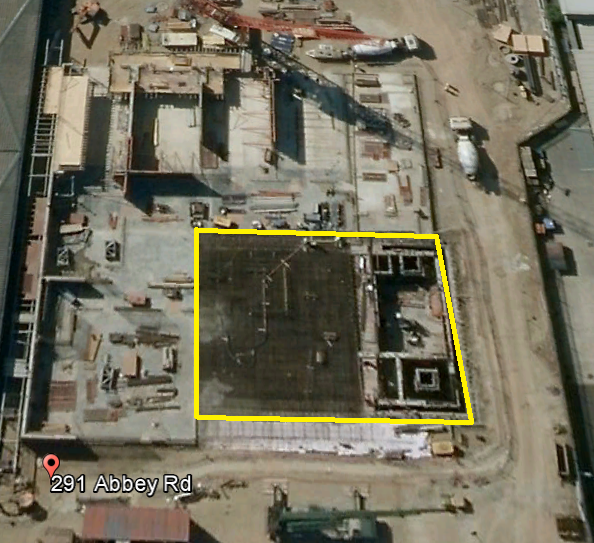
Finally, a Google Earth image from June 2015 shows an aerial view of the completed G4S development.
Conclusion
The hasty exit of Deutsche Bank from the London Gold Market has never been adequately explained by the media. It remains an elephant in the room that the mainstream media does not seem to want to touch. The composition and operating mechanisms of the private LPMCL club is also another elephant in the room that mainstream media journalists have never adequately analysed and are unlikely to do so.
Now that ICBC Standard Bank has taken on the remaining term of the 10 year G4S lease that was vacated by Deutsche Bank, the key questions for ICBC are to what use will the state-controlled Chinese bank put this precious metals vault to, and whether the 5 incumbent LPMCL members will formally (along with the Bank of England informally) give the go-ahead to allow ICBC become a member of the private syndicate that is London Precious Metals Clearing Limited. The other outstanding question is whether Standard Chartered will also be involved in any extension of membership of LPMCL.
Another little appreciated fact is that during the pitches for the replacements to the Gold Fixing and Silver Fixing auctions, most of the exchanges and companies making the pitches, such as, CME, LME, ICE, all offered working solutions that included centralised on-exchange clearing of precious metals for the London Gold and Silver Markets. These solutions were even included in the various presentation materials of CME, ICE and LME, and made it into market presentations and press releases etc, however, the LBMA and its various associated accomplishes such as the LPMCL, pushed back completely on any part of solution that would have encroached on the existing LMPCL clearing mechanism.
The question of why LMPCL was so ‘precious’ that it needed protection from a transparent on-exchange clearing platform is also a question that mainstream financial journalists seem to have entirely missed. I will write a future blog post on LPMCL so as to shed some light on this thoroughly protected private syndicate of bullion bank clearers.
Popular Blog Posts by Ronan Manly
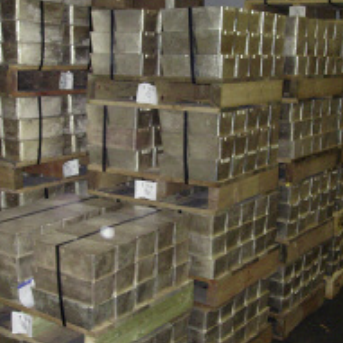 How Many Silver Bars Are in the LBMA's London Vaults?
How Many Silver Bars Are in the LBMA's London Vaults?
 ECB Gold Stored in 5 Locations, Won't Disclose Gold Bar List
ECB Gold Stored in 5 Locations, Won't Disclose Gold Bar List
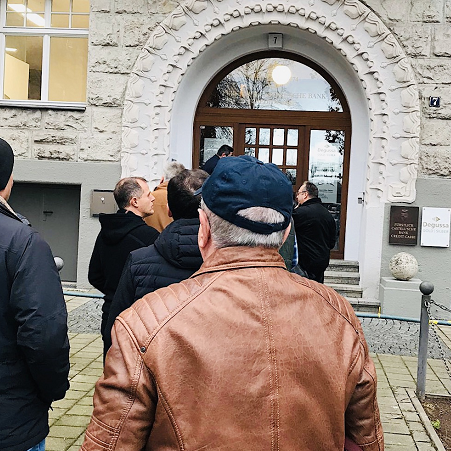 German Government Escalates War On Gold
German Government Escalates War On Gold
 Polish Central Bank Airlifts 8,000 Gold Bars From London
Polish Central Bank Airlifts 8,000 Gold Bars From London
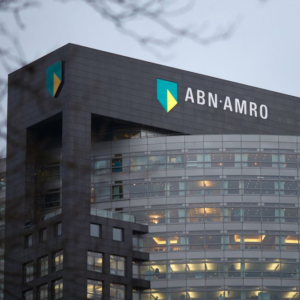 Quantum Leap as ABN AMRO Questions Gold Price Discovery
Quantum Leap as ABN AMRO Questions Gold Price Discovery
 How Militaries Use Gold Coins as Emergency Money
How Militaries Use Gold Coins as Emergency Money
 JP Morgan's Nowak Charged With Rigging Precious Metals
JP Morgan's Nowak Charged With Rigging Precious Metals
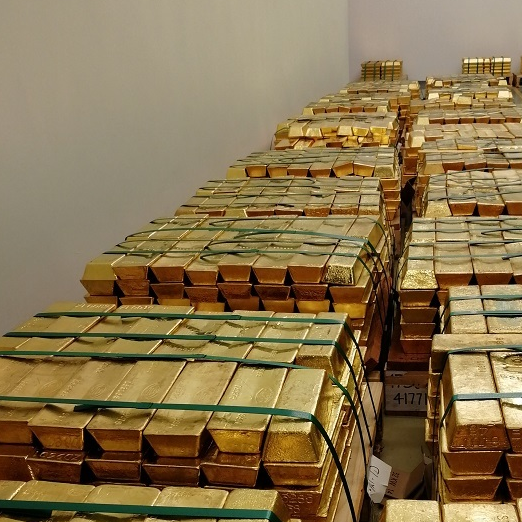 Hungary Announces 10-Fold Jump in Gold Reserves
Hungary Announces 10-Fold Jump in Gold Reserves
 Planned in Advance by Central Banks: a 2020 System Reset
Planned in Advance by Central Banks: a 2020 System Reset
 Surging Silver Demand to Intensify Structural Deficit
Surging Silver Demand to Intensify Structural Deficit





 Ronan Manly
Ronan Manly 1 Comments
1 Comments